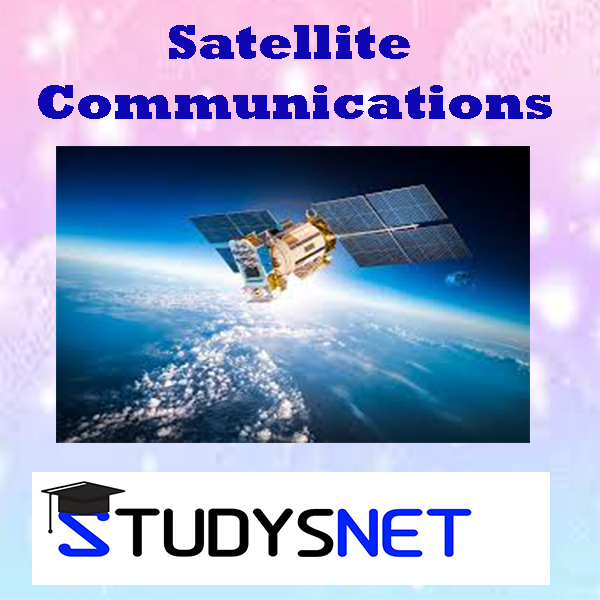Satellite Communications free videos and free material uploaded by Ramanjaneyulu K .
OBJECTIVES:
The student will be introduced to:
1. Understand the basic concepts, applications, frequencies used and types of satellite communications.
2. Understand the concept of look angles, launches and launch vehicles and orbital effects in satellite communications.
3. Understand the various satellite subsystems and its functionality.
4. Understand the concepts of satellite link design and calculation of C/N ratio.
5. Understand the concepts of multiple access and various types of multiple access techniques in satellite systems.
6. Understand the concepts of satellite navigation, architecture and applications of GPS.
UNIT I:
INTRODUCTION [2] : Origin of Satellite Communications, Historical Back-ground, Basic Concepts of Satellite Communications, Frequency allocations for Satellite Services, Applications, Future Trends of Satellite Communications.
ORBITAL MECHANICS AND LAUNCHERS : Orbital Mechanics, Look Angle determination, Orbital perturbations, Orbit determination, launches and launch vehicles, Orbital effects in communication systems performance.
UNIT II
SATELLITE SUBSYSTEMS[1] : Attitude and orbit control system, telemetry, tracking, Command and monitoring, power systems, communication subsystems, Satellite antenna Equipment reliability and Space qualification.
UNIT III
SATELLITE LINK DESIGN : Basic transmission theory, system noise temperature and G/T ratio, Design of down links, up link design, Design of satellite links for specified C/N, System design example.
UNIT IV
MULTIPLE ACCESS[1][2] : Frequency division multiple access (FDMA) Intermodulation, Calculation of C/N. Time division Multiple Access (TDMA) Frame structure, Examples. Satellite Switched TDMA Onboard processing, DAMA, Code Division Multiple access (CDMA),Spread spectrum transmission and reception.
UNIT V
EARTH STATION TECHNOLOGY[3] : Introduction, Transmitters, Receivers, Antennas, Tracking systems, Terrestrial interface, Primary power test methods.
LOW EARTH ORBIT AND GEO-STATIONARY SATELLITE SYSTEMS[1] : Orbit consideration, coverage and frequency considerations, Delay & Throughput considerations, System considerations, Operational NGSO constellation Designs
UNIT VI
SATELLITE NAVIGATION & THE GLOBAL POSITIONING SYSTEM : Radio and Satellite Navigation, GPS Position Location principles, GPS Receivers and codes, Satellite signal acquisition, GPS Navigation Message, GPS signal levels, GPS receiver operation, GPS C/A code accuracy, Differential GPS.
- Unit-1 Satellite Communications notes
- Unit-2 Satellite Communications notes
- Unit-3 Satellite Communications notes
- Unit-4 Satellite Communications notes
- Unit-6 Satellite Communications notes

- 0 Reviews
- 23 Students
- 73 Courses

Write a public review